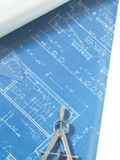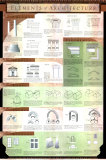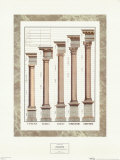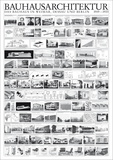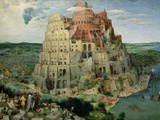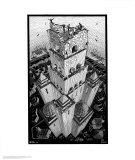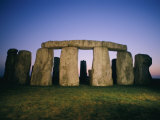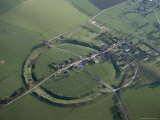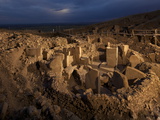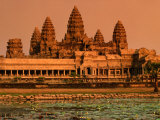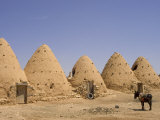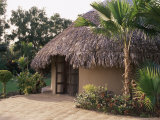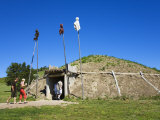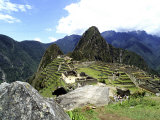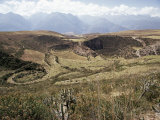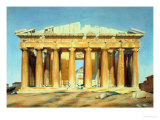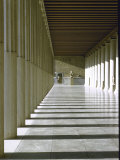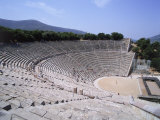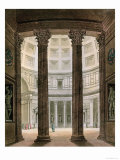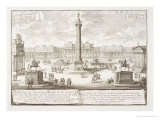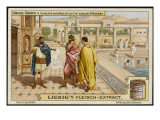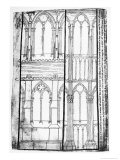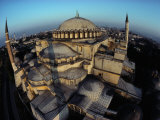|
|
Architecture Posters, pg 1/2
for art, art history and social studies classrooms and home schoolers.
|
art > ARCHITECTURE POSTERS 1 | 2 | architects list < social studies
|
|
Architecture is the the art and science of designing the built environment. Architecture includes designing exteriors and interiors of structures, town planning, urban design and landscapes. How a civllization builds - the materials used, where buildings are placed in the landscape and in relation to one another, express the ideals of the culture.
• “An arch never sleeps.” - Hindu proverb
• “A structure becomes architectural, and not sculptural, when its elements no longer have their justification in nature.” Apollinaire
• “Architecture is inhabited sculpture.” - Constantin Brancusi
• “I call architecture ‘petrified music’.” - Goethe
• “Architecture has recorded the great ideas of the human race. Not only every religious symbol, but every human thought has its page in that vast book.” Victor Hugo
• “Men resemble great deserted palaces: the owner occupies only a few rooms and has closed-off wings where he never ventures.” ~ Francois Mauriac
• “In architecture the pride of man, his triumph over gravitation, his will to power, assume a visible form. Architecture is a sort of oratory of power by means of forms.” - Friedrich Nietzsche
• “No architecture can be truly noble which is not imperfect.” - John Ruskin
• “Architecture is a continuing dialogue between generations which creates an environment across time.” - Vincent Scully
• “What's the use of a fine house if you haven't got a tolerable planet to put it on?” ~ Henry David Thoreau
|
|
|
Elements of Architecture
• Columns,
• Pediments,
• Temples,
• Roofs,
• Arches,
• Windows.
|
|
|
|
|
|
|
The Bauhaus (“House of Building”) was both an academic school combining fine arts and crafts as well as the design movement in modern architecture where form reflect function.
Architect Walter Gropius was a founder of the Bauhaus.
• The New Architecture and The Bauhaus
|
|
|
|
The Tower of Babel may have been a Mesopotanian ziggurat, a flat topped stepped tower built by the ancient Sumerians, Babylonians and Assyrians.
Genesis 11:1-9 (KJV):
1 And the whole earth was of one language, and of one speech. 2 And it came to pass, as they journeyed from the east, that they found a plain in the land of Shinar; and they dwelt there. 3 And they said one to another, Go to, let us make brick, and burn them thoroughly. And they had brick for stone, and slime had they for mortar. 4 And they said, Go to, let us build us a city and a tower, whose top may reach unto heaven; and let us make us a name, lest we be scattered abroad upon the face of the whole earth. 5 And the Lord came down to see the city and the tower, which the children built. 6 And the Lord said, Behold, the people is one, and they have all one language; and this they begin to do; and now nothing will be restrained from them, which they have imagined to do. 7 Go to, let us go down, and there confound their language, that they may not understand one another's speech. 8 So the Lord scattered them abroad from thence upon the face of all the earth: and they left off to build the city. 9 Therefore is the name of it called Babel; because the Lord did there confound the language of all the earth: and from thence did the Lord scatter them abroad upon the face of all the earth.
• Judaism posters
• more M. C. Escher posters
|
|
|
|
The three largest pyramids from left to right are the pyramid of Menkaura with its subsidiary pyramids, the pyramid of Khafre, and the Great Pyramid of Khufa is the largest, which covers 13 acres and had an original height of 481 feet.
• UNESCO World Heritage Site
• Egypt posters
• more pyramids posters
|
|
|
|
The Great Wall of China is the longest man-made structure on Earth, stretching from Shanhai Pass in the east to Lop Nur in the west (over 3,948 miles).
The Wall, a series of stone and earthen fortifications, was built, rebuilt, and maintained between 5th century BC and the 16th century, to protect the northern borders of the Chinese Empire.
• UNESCO World Heritage Site.
|
|
|
|
Stonehenge, a UNESCO World Heritage Site in England and one of the most famous prehistoric sites, is composed of earthworks surrounding a circular setting of large standing stones.
Archaeologists believe Stoneshenge was built in four stages beginning sometime around 3,100 B.C. One apparent function of Stonehenge was to mark the equinox of the Sun.
A “henge” is a nearly circular or oval-shaped area “enclosed and delimited by a boundary earthwork that (is) usually comprised by a ditch with an external bank” considered to serve a ritual purpose. Avebury, in Wiltshire, is a Neolithic monument older than Stonehenge.
|
|
|
|
Gobekli Tepe, the oldest known religious structure (9,000 BC), is a Neolithic hilltop sanctuary at the top of a mountain ridge in what is today southeastern Turkey.
It was built by hunter-gatherers who carved reliefs on the pillars depicting “foxes, lions, cattle, hyenas, wild boar, wild asses, herons, ducks, scorpions, ants, spiders, many snakes, and a small number of anthropomorphic figures”.
The discovery of Gobekli Tepe is changing the understanding of the development of human societies. The archeologist Klaus Schmidt hypotized from the evidence at Gobekli Tepe that “First came the temple, then the city”.
• History's Mysteries
|
|
|
|
The ruins of Angkor, a UNESCO World Heritage Site, are located amid forests and farmland near modern day Siem Reap (13°24'N, 103°51'E) in Cambodia. The ruins were never ‘lost’; the French explorer Henri Mouhot visited them in the mid 1800s and his posthumously published essays popularized the ruins to the Western world.
FYI ~ The word Angkor means city, or capital; the word “wat” is the Khmer word for temple.
• Angkor: Cambodia's Wondrous Khmer Temples, Fifth Edition
|
|
|
|
Beehive houses are buildings made from a circle of stones topped with a domed roof. The name comes from the similarity in shape to a straw beehive.
Building structures from earthen materials has a long history of providing durable, secure, and comfortable shelters fashioned from locally available materials. It is estimated that half the world's people still inhabit dwellings made with soils.
While most earth homes are found in hot, dry climates and are well suited for passive solar heating and cooling in such areas, earthen homes can be protected overhanging roofs and outer coats of lime plaster or other suitable materials.
On-A-Slant Mandan Village (Mandan: Miti-ba-wa-esh), in North Dakota, had earthlodge shelters which were held up by a frame of cottonwood logs and covered with layers of willow branches, grass, and earth. The thick walls insulated the lodge effectively in both summer and winter.
|
|
|
|
Inca Ruins at Machu Picchu
UNESCO World Heritage Site
• Peru posters
• Native American posters
The Inca ruins at Moray consists of “enormous terraced circular depressions” (dug out to the depth of 150 meters) are described as an agricultural research station used to study the effects of altitude on crops, and as an amphitheatre for nearly 300,000. |
|
|
|
Athena's most famous temple is the Parthenon, located on the Acropolis of Athens. Built in the 5th century BC, the Parthenon is the most important surviving building of Classical Greece. The Acropolis of Athens, a high flat topped rock, has evidence of of habitation there since the Early Neolithic period (6th millennium BC). It is a UNESCO World Heritage Site.
An agora is a place of assembly where citizens (in the case of ancient Greek city-states, free-born, male, land-owning, citizens) gathered for political and military purposes, and later a market for merchants with shops along the colonnade.
FYI - Someone who is agoraphobic is afraid of public places and crowds (agora=market+phobia=fear).
|
|
|
|
Epidaurus was the birthplace of Apollo's son Asclepius, the god of medicine and healing. The theatre at Epidaurus was built from the proceeds of the many people who visited seeking a cure for their illness.
• Asclepius (L. Aesculapius) & Hippocrates
|
|
|
|
The Roman Pantheon (pan = all + theon = gods) dates from about 125 AD, a part of the rebuilding of Rome by the Emperor Hadrian. The round opening at the top of the poured concrete coffered dome is called an oculus (Latin = eye), and is the only source of light in the Pantheon. The original Pantheon was built by Marcus Agrippa; Apollodorus of Damascus is usually credited as the architect/engineer of the current structure, based on the original design.
|
|
|
|
Trajan's Square Rome, from "Entwurf Einer Historischen Architektur"
The Trajan Column, completed in 113, is a freestanding column famous for its spiral bas relief commemorating Trajan's victory in the Dacian Wars. There is speculation that the column served as a measuring stick for the construction of the surrounding forum.
|
|
|
|
Baths of Caracalla
The Baths of Caracalla was a public center in Rome, built by the Emperor Caracalla between 212-216. They could accomodate 1,600 bathers and were in use until the 6th century when the Ostrogoths destroyed the hydraulic system. The complex was also the site of a public library with Greek and Latin texts.
The design of Pennsylvania Station in NYC was inspired by the Baths, and the 1960 Olympic gymnastics competition was based there.
DYK? ~ The Emperor Caracalla was born in Lyon, France.
|
|
|
|
Villard de Honnecourt traveled throughout 13th century France cathedral building sites making drawings and detailed descriptions of sculpture, and architectural plans, elevations and details, ecclesiastical objects and mechanical devices.
The Cathedral of Reims, which was damaged by the Germans during WWI, but since restored, played the same role in France as Westminster Abbey has in the United Kingdom.
• more Middle Ages
|
|
|
|
Hagia Sophia (Ayasofya in Turkish) in Instanbul, was built as a Christian Basilica, Church of Holy Wisdom, between 532 and 537 A.D. It was converted to a mosque in 1453 and has been museum since 1935.
Isadore of Miletus & Anthemius of Trailes, were the original architects; Sinan (1489-1588), an Ottoman architect, designed the fortification of the mosque against earthquakes.
• Middle East
FYI ~ Eight Corinthian columns were disassembled from the ruins of Baalbek, Lebanon, and shipped to Constantinople under Justinian's orders for his basilica of Hagia Sophia.
|
|
|
previous page | top |ARCHITECTURE POSTERS 1 | 2
|
|
I have searched the web for visual, text, and manipulative curriculum support materials - teaching posters, art prints, maps, charts, calendars, books and educational toys featuring famous people, places and events - to help teachers optimize their valuable time and budget.
Browsing the subject areas at NetPosterWorks.com is a learning experience where educators can plan context rich environments while comparing prices, special discounts, framing options and shipping from educational resources.
Thank you for starting your search for inspirational, motivational, and educational posters and learning materials at NetPosterWorks.com. If you need help please contact us.
|
|
|



















